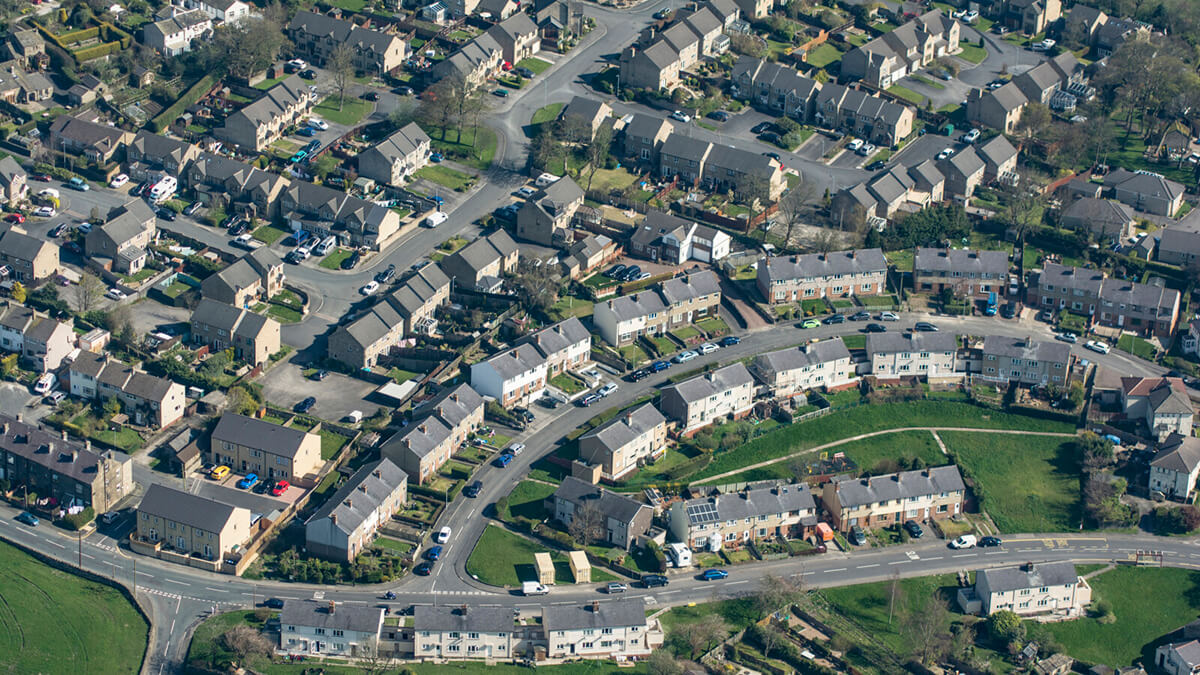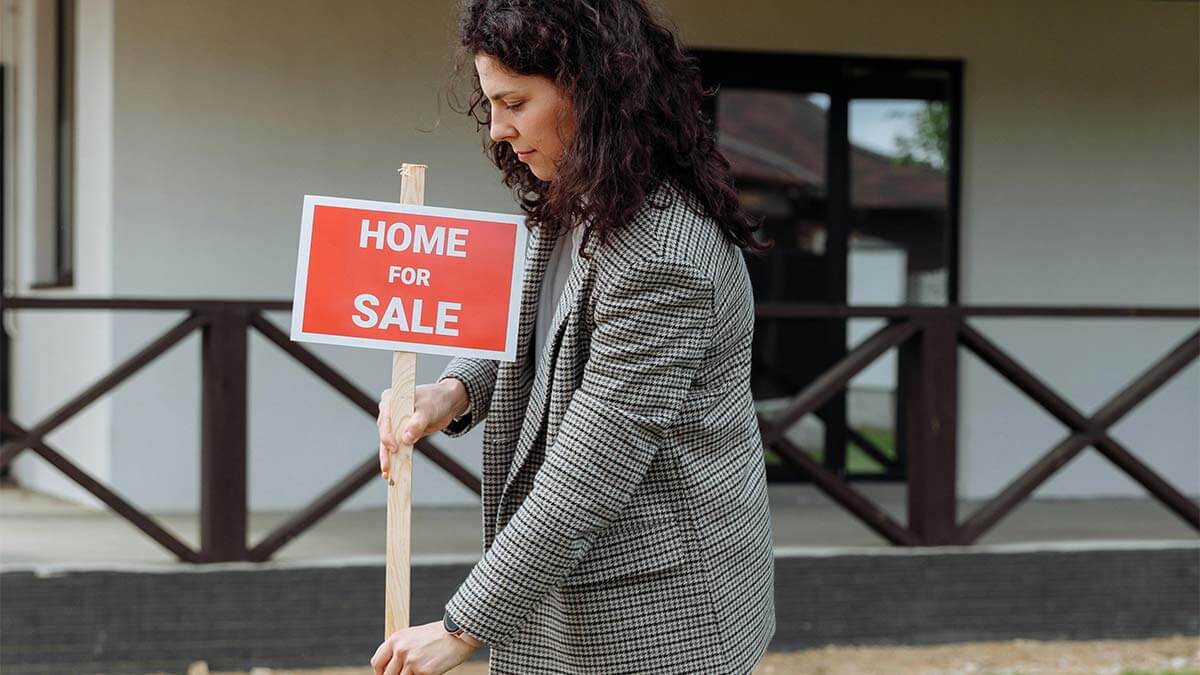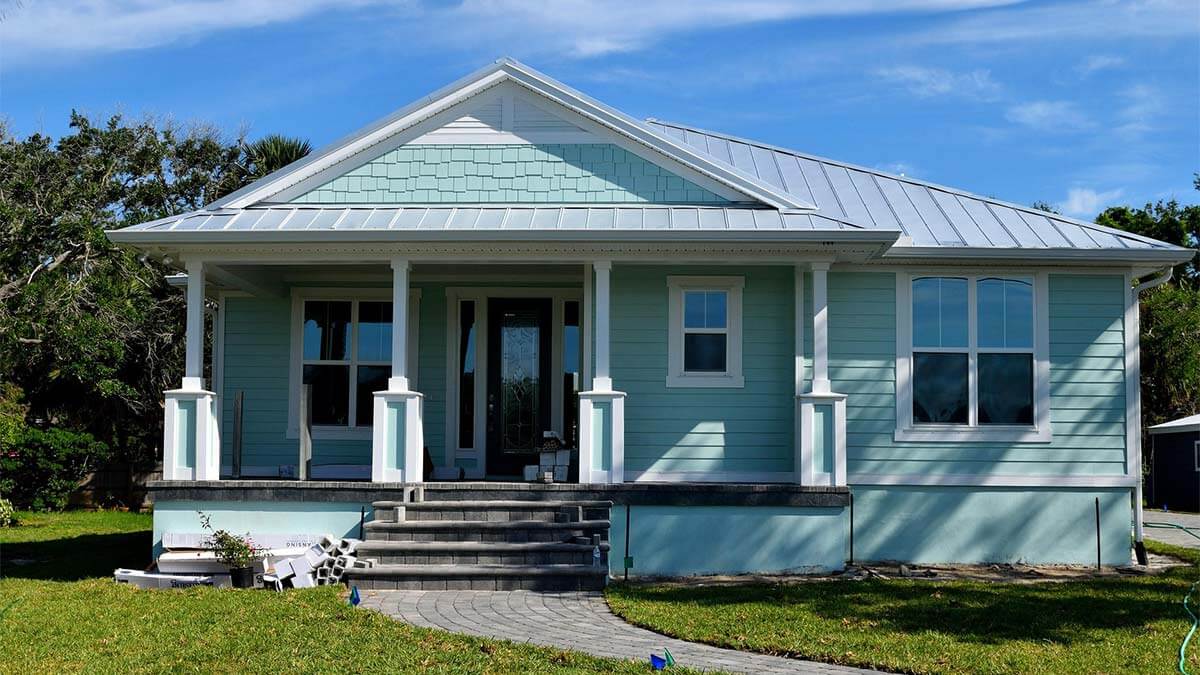Water damage often stems from plumbing issues, faulty appliances, or severe weather events. As this type of damage can cause extensive problems for homeowners, being able to detect early signs of water damage is the best way to prevent minor issues from escalating into significant structural problems.
This guide will go over how to detect and prevent water damage, what factors can influence repair costs, and what you can expect to pay for restoration.
If you’re looking to sell without investing in repairs, iBuyer.com can provide multiple cash offers for your home as-is.
Water Damage House Repair Cost
- What is water damage?
- How to spot water damage
- Water damage restoration
- What factors determine water damage repair cost?
- Water damage house repair costs
- Labor costs to repair water damage
- Additional costs associated with water damage repair
- How to prevent mold after water damage
- More tips on preventing mold
- How to prevent water damage
- How your water bill can prevent water damage
- Get a cash offer from iBuyer.com
Compare Cash Offers from Top Home Buyers. Delivered by Your Local iBuyer Certified Specialist.
One Expert, Multiple Offers, No Obligation.
What is water damage?
Water damage refers to the destructive effects caused by water infiltrating and damaging various materials and structures. It occurs when water enters an area where it shouldn’t be, such as a building or a home, and causes harm to surfaces, belongings, and the overall structure.
Water damage can be the result of various factors, including natural disasters like floods or heavy rain, plumbing issues such as leaks or burst pipes, appliance malfunctions, or even human error like leaving a faucet running.
The consequences of water damage can be extensive, ranging from minor issues like stains and dampness to severe structural damage, mold growth, and potential health hazards.
How to spot water damage
In the case of a home flooding, it’s not difficult to visualize and smell water damage. Soaking wet carpets, water-stained furniture, and ruined personal belongings are all clues.
Unfortunately, water damage is often hidden behind walls, ceilings, or under flooring.
If you don’t notice the damage, it can eventually result in structural damage to your home. What could have been a relatively easy and economical repair may end up costing thousands of dollars.
Here are the hidden signs of water damage in a home:
- Peeling wallpaper
- Flaking paint
- Water-stained ceilings
- Discolored drywall
- Buckled floors
- Warped walls and ceilings
- Musty odors
- Mold
Another clue to watch for is an unexplained increase in your water bill. If you pay close attention to billing trends and notice a sudden spike in usage, you could have a hidden leak.
For home sellers, water damage is always on the formal home inspection checklist.
Water damage restoration
When dealing with water damage, the path to repair can be complex. There are several steps to take if you hope for a complete restoration.
In most cases, you’ll need to call a professional remediation company. Professionals bring the best equipment for the job and can also handle any permits required during the repair process.
The first step to repairing the damage is an inspection of your home and its structure. If you have structural damage, it may not be safe to even remain in the house.
After the initial assessment, you can begin removing any standing water. Professionals use industrial-type wet vacs and submersible pumps, which can remove thousands of gallons of water.
Once you handle standing water, you can begin the drying process. Professionals use industrial dehumidifying equipment and fans, which help speed up the water evaporation process.
After removing water from walls, floor pads, and building materials, you may need to clean and sanitize your home. Store-bought air fresheners won’t suffice, so you’ll likely need professional air scrubbers.
After you’ve removed the water, it’s time to make any necessary repairs. Repairs may include the following:
- Roof repair
- Floor repair
- Drywall replacement
- Carpet installation
- Repainting
In addition to working through the restoration process, you’ll also work with your insurance company to submit whatever documentation they need to process your water damage claim.
What factors determine water damage repair cost?
Several factors determine water intrusion repair costs, including the size of your home and the amount of water involved. The type of floodwater you’re dealing with is another significant factor in determining your repair costs.
Water damage professionals categorize floodwater based on the level of hazard the water presents. They use the following categories:
Category 1
What separates Category 1 water is its source. This is clean water that comes from a sanitary source. For example, water from a faucet is clean, and so is melting snow.
It’s determined to be clean because it’s not dangerous for humans or pets. Even so, it can cause significant property damage.
Category 2
Water deemed to be Category 2 isn’t considered clean. This water is used and contaminated. However, it does not contain sewage.
Category 2 water, often called gray water, comes from appliances such as washing machines and dishwashers. It may also come from a failed sump pump, sink drain, or overflowing toilet containing only urine.
Category 3
The worst category and considered highly unsanitary, Category 3 water contains bacteria, household chemicals, and sewage. This water can cause illness and even death if a person ingests it.
You may hear Category 3 water called black water. It comes from a toilet overflowing with feces, sewer backups, and flooded rivers and streams. Category 2 water can become Category 3 if bacteria develop.
Each factor requires a different level of restoration, which impacts the water damage repair cost.
Water damage house repair costs
The average cost to repair water damage is $3,300. Depending on the damage and the other factors listed in the previous section, you could pay up to $13,000 or more.
Professionals calculate costs based on the level of property loss. Class 1 water loss is the least expensive, and Class 4 requires the most intervention, making it the most costly.
Here is more information about water loss classification:
Class 1
If you have a Class 1 water loss, the damage is usually limited to one part of a room. This type of loss might also impact a large area but with minimal water absorption.
Cost: $150 to $400
Class 2
A class 2 water loss damages all the carpet in one room. The upholstery and cushions will be soggy if you have furniture in the room.
You’ll see a waterline on the walls that measures less than 24 inches high. Building materials like plywood, concrete and structural wood will be saturated with water.
Cost: $500 to $1,000
Class 3
It’s common to find Class 3 water loss in walls and ceilings, insulation, carpet, and sub-flooring. Usually, the water comes from overhead, such as from a leaky plumbing pipe located above the ceiling.
The water saturates everything in the area.
Cost: $1,000 to $3,000
Class 4
If you suffer a Class 4 property loss, your home has extensive water damage. Damaged materials have deep pockets of saturation, resulting in longer drying times than materials from Classes 1 through 3.
Remediation also requires unique methods and equipment.
Cost: $20,000 to $100,000
Labor costs to repair water damage
When you work with a water restoration professional, you’ll get an estimate for the project after they perform their inspection. In most cases, labor will make up a significant portion of the cost.
When considering labor costs, it’s essential to know that the water damage repair process happens in two phases.
First, you must dry out the house. The second phase is restoration.
The timeframe for the completion of the project will depend on the category and class of damages. Expect to pay between $70 and $200 per hour for every technician working on your project.
You may pay more or less depending on your location.
Additional costs associated with water damage repair
So far, the cost to repair water damage covers drying out the house. You may incur other charges beyond water removal and dehumidification.
For example, let’s say you have a flood-damaged 800-square-foot basement with unsalvagable carpet. To install a new carpet, you spend between $1,400 and $6,000.
Harwood flooring can suffer extreme water damage, especially if left without treatment for too long. If you have to replace or refinish hardwood floors, you’ll pay around $10.45 per sq. ft.
You may need to replace entire sections of the drywall. Drywall replacement costs around $1.40 per sq. ft.
Plaster walls often need replacement, which is a much more expensive repair cost than drywall at between $6.25 and $18.75 per sq. ft.
Mold is another issue that many homeowners face after water damage. If it happens to your home, you’ll need mold remediation. Your cost will run about $5.00 per sq. ft.
How to prevent mold after water damage
One of the unpleasant and unhealthy effects of water damage is mold development. Aside from the smell, allowing mold to grow in your home risks your health.
You can prevent mold from growing, but time is essential. If your home is not completely dry within roughly 24 hours, mold will develop.
If you hire a water damage technician, they will do everything possible to prevent mold growth. Many homeowners choose the DIY route to water damage restoration. If that’s what you decide to do, then you’ll need to move quickly.
If you have a wet/dry shop vac, it will be a great tool to start the drying-out process. The job will go faster if you can rent an industrial-grade wet/dry vacuum.
You’ll want to start drying out the water-logged area immediately, which means using fans. You can begin with box fans, but you should consider renting an industrial fan since they can move five times as much air.
While you can use a consumer-grade dehumidifier, an industrial-quality dehumidifier will dry things out faster. Using a rental dehumidifier, you should be able to pull 18-20 gallons of water from the air every 24 hours. Most consumer-grade dehumidifiers have small tanks that only absorb 5 gallons of water daily.
More tips on preventing mold
Using the best machines and techniques helps prevent mold development, but there are a few other things to keep in mind.
When cleaning up, start with areas with Category 3 water damage. Black water is a prime breeding ground for mold spores. After dealing with Category 3 damage, you can move on to gray and fresh water-damaged areas.
Don’t keep waterlogged and unsalvageable material. It can develop mold weeks after your home flooding occurs. Even materials with just a trace of moisture can host mold growth.
After restoration, you’ll want to be aware of clues that you haven’t eliminated all the water. You’ll also want to stay alert to signs of mold development, including:
- Musty odor
- Warped drywall
- Paint deterioration
- Visible mold
Pay close attention to the carpet and drywall. You should always check by touching the areas because they may look dry but feel wet.
If you find mold growing, take steps to remove it, and perhaps, contact the company that took care of the water damage repairs.
How to prevent water damage
When you experience water damage, you may not know what to do next. It can feel overwhelming, but a quick reaction can help you minimize the damage and the cost of repairing your home.
While you can’t prepare for every catastrophic event, you can be proactive. It’s a good idea to use this section as a checklist as you go through the motions of securing your home from water damage.
- Inspect sinks and drains
- Locate water shut-off valves
- Install leak detectors
- Monitor the sump pump
- Fix plumbing leaks
- Caulk around windows and doors
- Keep gutters and downspouts clean
You should also check your appliances.
If your refrigerator includes an icemaker, ensure the water lines are intact. Water heaters are notorious for causing floods. Every year, inspect for slow leaks, pooling water, rust, or corrosion.
Don’t forget your air conditioner. Keep an eye out for leaks or water damage in your unit’s area.
How your water bill can prevent water damage
Earlier in this article, you read about increased water usage and water damage. Keeping track of changes in water usage is as simple as tracking your water bills.
While many homeowners don’t pay much attention to minor differences in monthly water bills, a significant spike should get immediate attention. A big jump could indicate a hidden water leak.
If you can rule out a leaking toilet, dripping faucet, watering the lawn, or filling the swimming pool, it’s time to get more serious about narrowing down the cause of a higher bill.
The longer water damage goes unchecked, the higher your risk for costly repairs.
Get a cash offer from iBuyer.com
Even if you take all the measures to protect your home, you can’t always prevent water damage. When you experience severe water damage, house repair costs may be too much for your finances.
It’s also possible you’ve discovered water damage in a home you’re trying to sell. If that’s the situation you’re facing today, you have options.
Many homeowners in this situation take advantage of a cash offer from iBuyer.com.
Looking for cash offers on your home? You’ve come to the right place!
Reilly Dzurick is a seasoned real estate agent at Get Land Florida, bringing over six years of industry experience to the vibrant Vero Beach market. She is known for her deep understanding of local real estate trends and her dedication to helping clients find their dream properties. Reilly’s journey in real estate is complemented by her academic background in Public Relations, Advertising, and Applied Communication from the University of North Florida.




